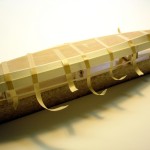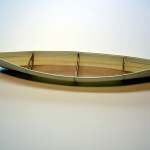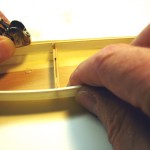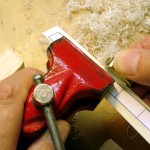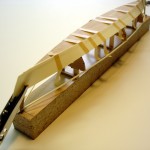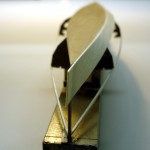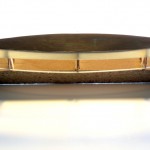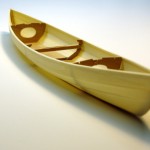 Here we see the boat removed from the building horse and the sheer planks trimmed. The translucent nature of these very thin planks lets us see how the laps (seen here as shadows) diminishes as they approach the stem.
Here we see the boat removed from the building horse and the sheer planks trimmed. The translucent nature of these very thin planks lets us see how the laps (seen here as shadows) diminishes as they approach the stem.
Click on the image to show a larger version.
